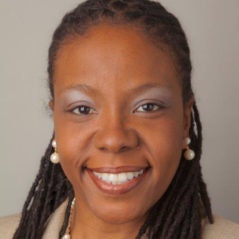The racial justice activism and protests of 2020 sparked a long-overdue reckoning with the inequitable access and disparate outcomes in higher education. Colleges and universities across the country held campus-wide discussions and pledged to dismantle the many barriers that still stand in the way of Black students earning a degree. It’s a conversation that continues on college campuses and among policymakers today.
But many students worry it’s all talk. A recent survey found that students felt the steps being taken by campus leaders amounted to more discussion, rather than action. Indeed, it will take much more work to ensure this moment of increased awareness translates into tangible shifts in policy and practice that improve the lives of students. Promises to do better and proclamations of Black Lives Matter mean very little unless institutions more fully grapple with how our systems of higher education are not designed to create successful outcomes for students of color.  Dr. Yolanda Watson Spiva
Dr. Yolanda Watson Spiva
One factor preventing this shift is the very vocabulary we use to have these important conversations in the first place. College leaders often describe the long-standing disparities in educational outcomes between different groups of students as “equity gaps.” That’s the wrong label. Instead, we must employ a more accurate term that reframes this systemic problem and shifts the responsibility more directly onto our system of higher education. These are not equity gaps, but “institutional performance gaps.”
Language matters. It reflects our understanding of a problem and it shapes our solutions. The term “equity gaps” implies that demographic traits of students are to blame for the disparate and unequal results within higher education. An equity gap mentality places the onus on our students when it should be focused on the entrenched societal and institutional systems and structures within higher education. Racial inequity in educational outcomes is not rooted not in gaps between groups of students but in institutional (i.e. college and university) performance.
BILPOC (Black, Indigenous, Latinx, People of Color) learners have to climb enormous hurdles just to graduate from high school. They are less likely than their white peers, for instance, to have access to a full range of math and science courses to prepare them for college. They’re under-represented in honors and Advanced Placement classes and are less likely to have broadband internet at home. They are more likely to attend under-resourced schools, and they enroll in college at much lower rates than white learners. They’re also less likely to be admitted to the nation’s best-funded and most selective four-year universities.
Once they step foot on a college campus, BILPOC students and students from under-resourced communities take longer to accumulate credits, take longer to finish their degrees, and complete college at lower rates than white and more advantaged students. It’s easy for colleges and universities to say that these gaps persist on campus simply as an extension of the historic and pernicious societal challenges institutions are working so hard to address.
But this view ignores the role that these institutions play in failing to close these gaps themselves. In too many cases, institutions aren’t as focused as they should be on student success, especially for their most vulnerable learners. Some schools don’t collect student outcome data or, if they do, aren’t able to analyze or leverage it effectively. Colleges continue to make it far too difficult for students to transfer credits, and they disproportionately place students of color in remedial classes that don’t count toward their degrees.
Students from under-resourced families and communities battle housing and food insecurity. They work long hours and raise children, all while trying to keep up with their studies and struggling to find the support and courses they need due to a rigid adherence to campus schedules that fail to account for the busy lives of learners. And without the appropriate guidance to align coursework with careers, students often struggle to navigate the transition from college into the workforce. As a result, far too many learners drop out, leaving with no degree but plenty of loans they have little chance of ever repaying.
Institutions of higher education can re-shape their policies and practices to increase graduation rates that in turn can improve economic opportunity, racial justice, and social mobility. But this cannot happen on a wider scale until we have developed a shared language that more fully reckons with higher education’s real role in sustaining racial inequity—and the immense opportunity it now has to help dismantle it. This requires coming to terms with the uncomfortable fact that the way higher education operates—from curriculum design to faculty hiring to professional development—is not informed by the lives, experiences, and needs of learners of color.
To build a better system of higher education that responds to the needs of an increasingly diverse society we first need a more honest intellectual accounting of the inequitable institutional structures, systems, and policies that perpetuate social inequality within higher education–and call the phenomenon by its real name.
Dr. Yolanda Watson Spiva is president of Complete College America. Dr. Estela Mara Bensimon is the former director of the Center for Urban Education at the University of Southern California.















